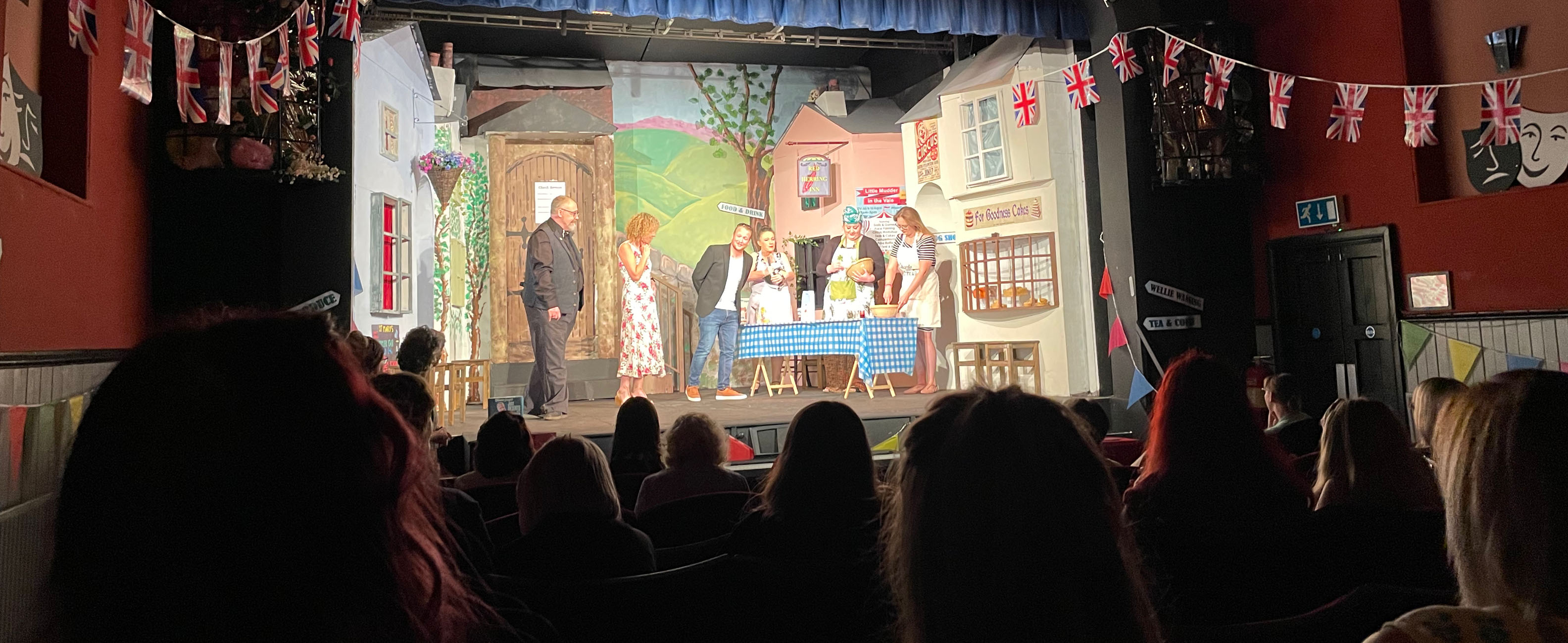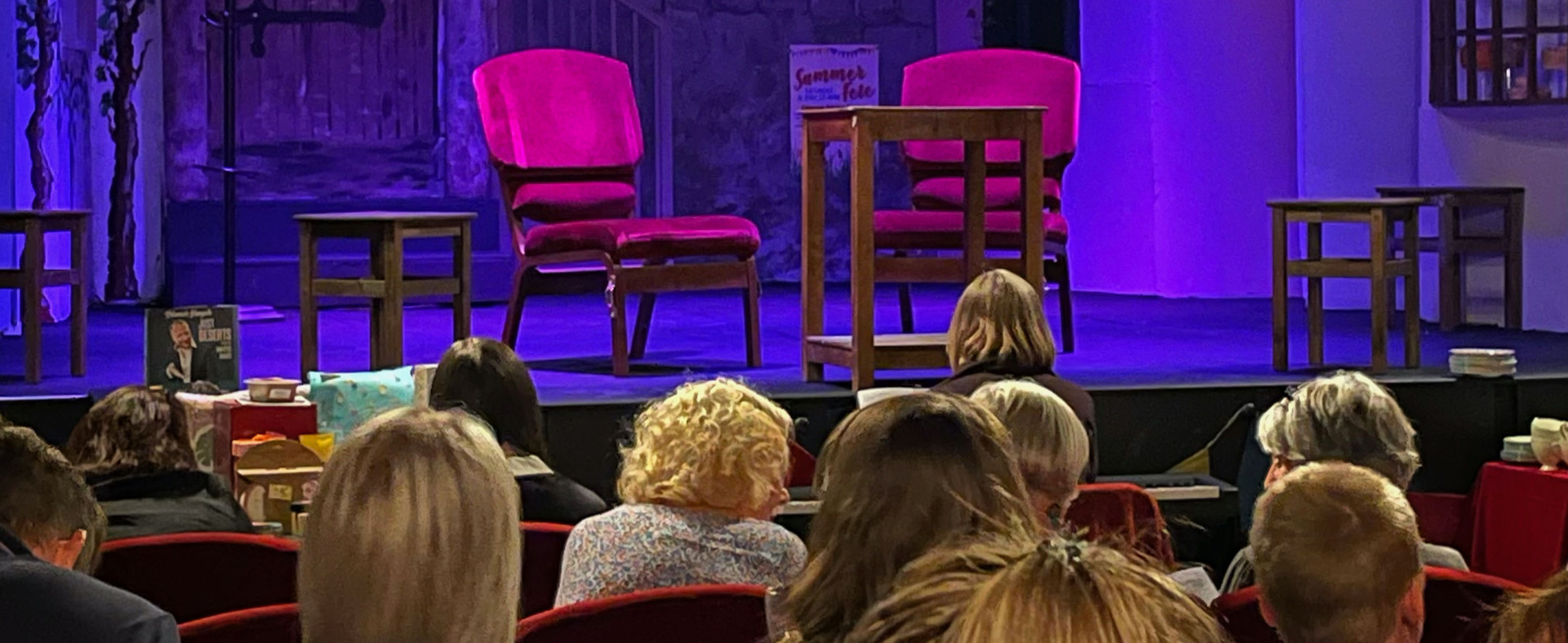John Peel Theatre
The Little Theatre at the Heart of Wigton
____________________________
Our Next Production:
A Midsummers Night's Dream![]()
Tickets available online

or by phoning 01697 424624
____________________________
President: Melvyn Bragg


____________________________
Our Facilities:
Proscenium arch theatre![]() 90 raked seats
90 raked seats![]() Wheelchair access
Wheelchair access![]() Induction loop
Induction loop![]() Licensed bar
Licensed bar![]() Real coffee
Real coffee![]() Ice cream & snacks
Ice cream & snacks
____________________________
Registered Charity No: 1178881
Who Was John Peel?
We are often asked why the theatre is named after late Radio 1 DJ John Peel. The short answer is, it isn't.
The theatre is in fact named after local huntsman John Peel, who died in 1854 and is immortalised in the world famous song, D'ye ken John Peel, which was written in Wigton.
See below for more information, including original song lyrics and a version of the song by The Spinners.
The theatre is in fact named after local huntsman John Peel, who died in 1854 and is immortalised in the world famous song, D'ye ken John Peel, which was written in Wigton.
See below for more information, including original song lyrics and a version of the song by The Spinners.
-

Memorial at St Kentigern's Church, Caldbeck
From Wikipedia:
John Peel (1776? – 13 November 1854) was an English huntsman who is the subject of the nineteenth century song D'ye ken John Peel - "ken" meaning 'to be aware of' or 'to know' in some dialects of the North of England and Scotland.
Peel was born at Park End, near Caldbeck, Cumberland; his family moved a short time after to the Greenrigg farm.[1] He was baptised on 24 September 1777, but most sources suggest he was born the previous year. Peel married in 1797 to Mary White.[1] Some of the White family's property at Ruthwaite(near Ireby) passed into his hands, which secured Peel a comfortable income. However, he was, as many of his friends admitted, prone to dissipation and he devoted himself primarily to hunting. Peel was a farmer by profession, and kept a pack of fox hounds. Peel hunted pine martens and hares in addition to foxes. By the end of his life (13 November 1854, most likely due to a fall while hunting) he had accrued large debts, which his friends helped him pay off.[1]
John Peel did occasionally ride to hounds, his mount being a 14 hand dun crossbred gelding named 'Dunny'. 'Dunny' would often be abandoned for hours during the hunt when the going became too rough to ride over, standing patiently waiting for his master to return.
Peel's niece Nancy Wilson (who was brought up in the Peel household) was also known to hunt with her Uncle John on horseback, 'mounted on a grey pony and garbed in a green habit', meaning she rode sidesaddle, which was the proper custom for ladies at the time. But Peel did on many occasions follow the old Cumberland custom, known as 'Chasing the Ace', chasing after the hounds on foot.
Peel became a moderately well-known figure, owing to the song written about him. Some of the local gentry, after his death, were glad to take on his sons as servants, and the story of Peel romanticised hunting activities for many.[1] He died in 1854 and is buried in the churchyard of St Kentigern's Church, Caldbeck.[2] In 1977 his grave was vandalised by anti-hunting activists.
John Peel (1776? – 13 November 1854) was an English huntsman who is the subject of the nineteenth century song D'ye ken John Peel - "ken" meaning 'to be aware of' or 'to know' in some dialects of the North of England and Scotland.
Peel was born at Park End, near Caldbeck, Cumberland; his family moved a short time after to the Greenrigg farm.[1] He was baptised on 24 September 1777, but most sources suggest he was born the previous year. Peel married in 1797 to Mary White.[1] Some of the White family's property at Ruthwaite(near Ireby) passed into his hands, which secured Peel a comfortable income. However, he was, as many of his friends admitted, prone to dissipation and he devoted himself primarily to hunting. Peel was a farmer by profession, and kept a pack of fox hounds. Peel hunted pine martens and hares in addition to foxes. By the end of his life (13 November 1854, most likely due to a fall while hunting) he had accrued large debts, which his friends helped him pay off.[1]
John Peel did occasionally ride to hounds, his mount being a 14 hand dun crossbred gelding named 'Dunny'. 'Dunny' would often be abandoned for hours during the hunt when the going became too rough to ride over, standing patiently waiting for his master to return.
Peel's niece Nancy Wilson (who was brought up in the Peel household) was also known to hunt with her Uncle John on horseback, 'mounted on a grey pony and garbed in a green habit', meaning she rode sidesaddle, which was the proper custom for ladies at the time. But Peel did on many occasions follow the old Cumberland custom, known as 'Chasing the Ace', chasing after the hounds on foot.
Peel became a moderately well-known figure, owing to the song written about him. Some of the local gentry, after his death, were glad to take on his sons as servants, and the story of Peel romanticised hunting activities for many.[1] He died in 1854 and is buried in the churchyard of St Kentigern's Church, Caldbeck.[2] In 1977 his grave was vandalised by anti-hunting activists.
D'ye ken John Peel - Lyrics
William Woodcock Graves; Cumbrian dialect, taken from original manuscript
George Coward version, approved by Graves for a book - Songs and Ballads of Cumberland, published in 1866
Did ye ken John Peel wid his cwote sae grey?*
Did ye ken John Peel at the breck o' day?
Did ye ken John peel gayin' far, far away -
Wie his hoons and his horn in a mwornin'?
Chorus:
For the sound o' the horn caw'd me fra my bed.
As the crt o' the hoons he often led,
For Peels view holla wad waken the dead,
Or a fox frae his lair in a mwornin.'
Do ye ken John Peel with his coat so grey?*
Do ye ken John Peel at the break of day?
Do ye ken John Peel when he's far, far away
With his hounds and his horn in the morning.
Chorus:
Twas the sound of his horn brought me from my bed
And the cry of his hounds has me oftimes led
For Peel's view holloa would wake the dead
Or a fox from his lair in the morning
2. Yes I kenn'd them aw an' morny things mair,
An' could tell sec teayles as to meayke yen stare,
How we ran down foxes and of'ns hare,
Erte the hoar left the hills in a mwornin.'
Chorus
2. D’ye ken that bitch whose tongue was death?
D’ye ken her sons of peerless faith?
D’ye ken that fox, with his last breath
Curs’d them all as he died in the morning?
Chorus
3. An we follot John Peel beath oft an' far,
Ower rasper fence and yett an' bar,
Frea low Dentonholm up to Scratchmere Scaur,
When we vied for the brush in the mwornin.'
Chorus
3. Yes I ken John Peel and Ruby too
Ranter and Royal and Bellman as true,
From the drag to the chase, from the chase to the view
From a view to the death in the morning
Chorus
4. An I knowe'd John Peel and his Ruby too,
Ranter an' Royal an' Belman as true,
Frae the drag to the chase frae then to the view,
Frae the view to the death in the mwornin'.
Chorus
4. And I’ve followed John Peel both often and far,
O’er the rasper fence and the gate and the bar,
From low Denton Holme up to Scratchmere Scar,
Where we vie for the brush in the morning
Chorus
5. Here's tae John Peel wie a hert an' soul,
Let's freely brim into him another bowl,
We'll follow John Peel thro' fair an thro' foul,
Wheyle were wak't wid his horn in a mwornin'.
Chorus
5. Then here's to John Peel with my heart and soul
Come fill – fill to him another strong bowl,
And we'll follow John Peel through fair and through foul
While we’re waked by his horn in the morning.
Chorus
* This is a reference to his long coat made from the salved fleeces of the local Herdwick sheep that were spun into a cloth called hoddengrey.
D'ye ken John Peel - Videos












